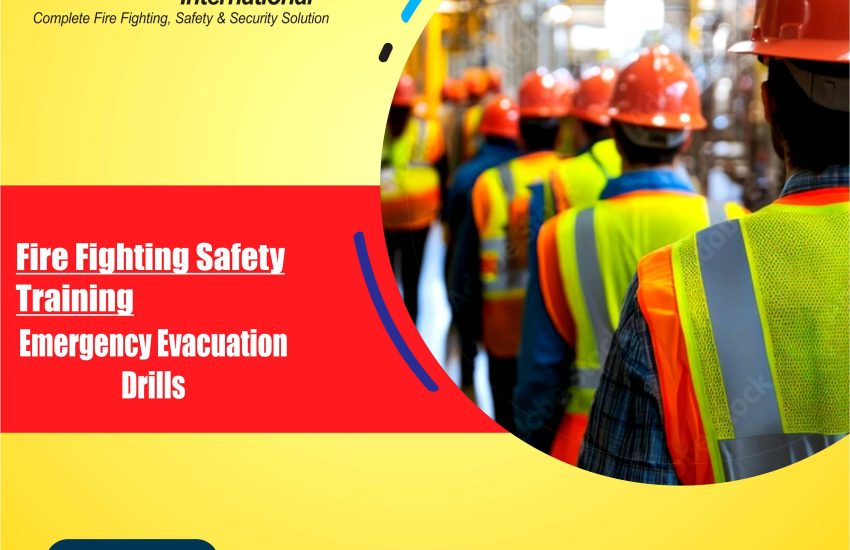Workers Practicing Emergency Evacuation Drills Ensuring a safe working environment is crucial for both employees’ well-being and a company’s overall success. One of the most effective ways to prepare workers for unexpected situations, such as fires, natural disasters, or other emergencies, is through regular emergency evacuation drills. Practicing these drills helps ensure that all employees know exactly what to do in the event of a crisis, preventing injuries and minimizing property damage. This article outlines the importance of workers practicing emergency evacuation drills, the key elements of a successful evacuation plan, and how to conduct effective drills in line with workplace safety regulations.
Why Are Emergency Evacuation Drills Important?
Emergency evacuation drills are a critical part of workplace safety. In an emergency, every second counts. When workers practice these drills, they become better prepared to respond quickly and effectively, reducing confusion and maximizing safety. Here are some key reasons why evacuation drills for workers are essential:
- Save lives: Well-practiced evacuation plans allow employees to exit the building in an orderly and timely manner. This reduces the risk of injury or fatality during emergencies.
- Ensure compliance: Many countries require businesses to comply with fire safety regulations and other safety standards, which often include conducting regular evacuation drills.
- Minimize panic: When workers know the steps to take in a fire, earthquake, or other emergency, it helps reduce anxiety and panic, enabling them to make clear decisions during a crisis.
- Reinforce safety culture: Regular drills reinforce a culture of workplace safety, reminding employees of the importance of emergency preparedness.
Key Elements of an Effective Emergency Evacuation Plan
Before workers can practice effective emergency evacuation drills, the organization needs to develop a comprehensive emergency evacuation plan. This plan should include:
1. Clear Evacuation Routes
The first thing workers need to know is how to exit the building safely. The evacuation plan should include:
- Designated exit routes: Clearly mark multiple exit routes and emergency exits. This ensures that employees can find a safe path out even if one exit is blocked.
- Exit signs and lighting: Exit signs should be visible, well-lit, and placed along evacuation routes to guide workers to safety.
2. Assembly Points
Once outside, employees need to know where to gather so that everyone can be accounted for. These assembly points should be:
- A safe distance from the building to avoid hazards such as smoke or falling debris.
- Clearly marked so that workers can find them quickly in a chaotic situation.
3. Roles and Responsibilities
In an emergency, having clearly defined roles can help streamline the evacuation process. Assigning responsibilities such as:
- Evacuation leaders: These individuals guide workers to exits and ensure everyone is accounted for.
- Special needs assistants: Workers with mobility challenges may need additional help during the evacuation process.
4. Fire Safety Equipment
Make sure that fire safety equipment such as fire extinguishers, smoke detectors, and sprinklers are well-maintained and easily accessible. Employees should know how to use this equipment during a real emergency.
5. Communication Systems
Effective communication is key during any emergency. Set up systems such as:
- Public address systems: These allow for announcements and instructions to be given to employees.
- Emergency contacts: Keep an up-to-date list of emergency contacts, including local fire departments, medical teams, and building managers.
Steps for Conducting Effective Emergency Evacuation Drills
Now that a solid evacuation plan is in place, it’s time to practice. Here are the best practices for conducting emergency evacuation drills:
1. Notify Employees in Advance
Although surprise drills can be effective, notifying employees in advance ensures that they can participate fully and safely. Employees should be informed about the date and time of the drill, but not the exact moment it will begin. This helps maintain a sense of realism without causing unnecessary stress.
2. Test the Plan
During the drill, test:
- Evacuation routes: Ensure that all paths are clear and employees can move quickly and safely to exits.
- Communication systems: Make sure the alarms, public address systems, and emergency contact lists work properly.
3. Time the Evacuation
Timing the evacuation helps assess its efficiency. Ideally, the drill should be completed within a reasonable timeframe, typically under 5 minutes in larger facilities. This helps identify any bottlenecks or areas for improvement.
4. Ensure Worker Safety
Safety during drills is paramount. Be sure that all employees are informed of:
- Safety protocols: Workers should know to stay calm, follow the instructions of designated evacuation leaders, and avoid using elevators.
- Injury prevention: Workers should be advised to avoid pushing or shoving during the evacuation to prevent accidents.
5. Debrief and Evaluate
After the drill, conduct a debriefing session to evaluate the performance of the evacuation. Discuss:
- What went well: Identify the parts of the evacuation that worked smoothly.
- What could be improved: Discuss areas where the process could be improved, such as clearer signage or quicker response times.
This feedback helps ensure that future drills are more effective.
Best Practices for Workers Practicing Emergency Evacuation Drills
- Frequent practice: Conduct regular drills (at least twice a year) to keep workers familiar with the evacuation process.
- Incorporate different scenarios: Practice for various emergencies such as fires, natural disasters, or chemical spills to ensure preparedness for any situation.
- Ensure inclusivity: Make sure the drill accommodates all employees, including those with disabilities, by assigning helpers and adjusting the process as needed.
- Update the plan regularly: Continuously update the evacuation plan to reflect any changes in the building layout, staff, or equipment.
Conclusion
Workers Practicing Emergency Evacuation Drills is one of the most effective ways to ensure workplace safety and prepare employees for unforeseen emergencies. A well-organized and regularly practiced evacuation plan can save lives, reduce damage, and help maintain a safe working environment. By focusing on clear evacuation routes, assigning roles, testing fire safety equipment, and conducting regular drills, employers can create a culture of emergency preparedness that benefits everyone in the workplace.


